- Created by Kelly Weigel, last modified by Conrad Hunter on Sept 10, 2025
Overview
This article will cover the basic functionality of Medical-Objects Explorer Online when running in Gateway Edition mode. If you have any questions or require any further information, please contact the Helpdesk on (07) 5456 6000.
Explorer Online was designed to run on desktops, laptops and modern tablets running Windows, MacOS or Linux. Mobile phones are not currently supported. Please take note of the browser requirements below.Requirements
Supported Browsers
When first loading Explorer Online you will be presented with a login screen. Simply enter in your username and password and click login to proceed. Once logged in you can Logout again or Change Provider by simply clicking on the User Menu in the top right hand corner of the screen. Tip! You will be automatically logged out after 10 minutes of inactivity. You can change this via the User Settings option in the User Menu. Two-factor authentication is a security feature that helps protect your account in addition to your password. With two-factor authentication, a special login code together with your username and password will need to be entered each time someone tries to access your account from a computer or device that isn't recognised. In order to generate the special login codes, you will need to install a free app which supports the Time-based One-time Password Algorithm (TOTP) such as Google Authenticator, Authy and Microsoft Authenticator. There are many others, and some of these apps also support generating codes from desktop computers. To enable two-factor authentication can be enabled through the following steps. 1. Once you have logged in, Two-Factor Authentication can be enabled by clicking 'Enable Two-factor Authentication' on the 'Security' section in the Dashboard. 2. It will prompt you for your password 3. Decide whether you would like to set your device as a trusted device (this will allow you to skip these Two-Factor steps for 30 days on the selected device). Simply use the toggle button below “Trust this device” to select your choice, then select “Proceed”. 4. Open your Two-Factor Authentication app and scan the QR code provided (or enter the optional code), then click “Continue”. 5. Enter the code your app provided you, then select “Submit”. 6. Your Two-Factor Authentication is now setup – Click “Close”. 1. Locate the “Security” section on your Medical Objects dashboard, and select “Manage Trusted Devices”. 2. A list of trusted devices should display. Simply click “Remove” to delete a trusted device. Please note: Trusted devices will allow you to skip the Two-Factor steps for 30 days - once the 30 days expires they will show as a “Expired Trusted Device”. This means the next time you log into the portal on this device you will be prompted to enter the code you receive from your Two-Factor Authentication app. What is two-factor authentication? Two-factor authentication is a security feature that helps protect your account in addition to your password. With two-factor authentication, a special login code together with your username and password will need to be entered each time someone tries to access your account from a computer or device we don't recognise. What do I need to be able to use it? In order to generate the special login codes, you will need to install an app which supports the Time-based One-time Password Algorithm (TOTP) such as Google Authenticator, Authy, Microsoft Authenticator or Duo. There are many others, and some of these apps also support generating codes from desktop computers. Do I always need to enter a code when logging in? During login, you can choose not to use two-factor authentication again on that specific device by setting it as a ‘trusted device’. If you select this option, that device will only ask for your username and password when logging in for the next 30 days. You will still be protected, because when you or anyone else tries to sign in to your account from an unrecognised device, two-factor authentication will be required. Browser third party cookies need to be enabled for Explorer Online and two-factor authentication to operate correctly. They are usually enabled by default. You should not choose to trust a public device. How do I enable two-factor authentication? To enable two-factor authentication, you will need to use your app to scan a QR code generated by Explorer Online (or type in the code if you cannot scan it). Your app will then generate a confirmation code which you need to enter when prompted by Explorer Online. Your account will now be two-factor authentication enabled, and you will need to generate a code with your app whenever prompted by Explorer Online during login. Can this be made mandatory for everyone at the organisation? Two-factor authentication can be made mandatory for all users. This will force each account on login to enable two-factor authentication (if it is not already enabled). Please contact our helpdesk (helpdesk@medicalobjects.com) if you would like this enabled. How to reset two-factor authentication? If you have lost your device or app which was used to enable two-factor authentication, email helpdesk@medicalobjects.com for assistance. The Dashboard is the default page that will appear once you have logged into Explorer Online. The Dashboard is split into two sections: the navigation menu and the main content area.Logging in and out
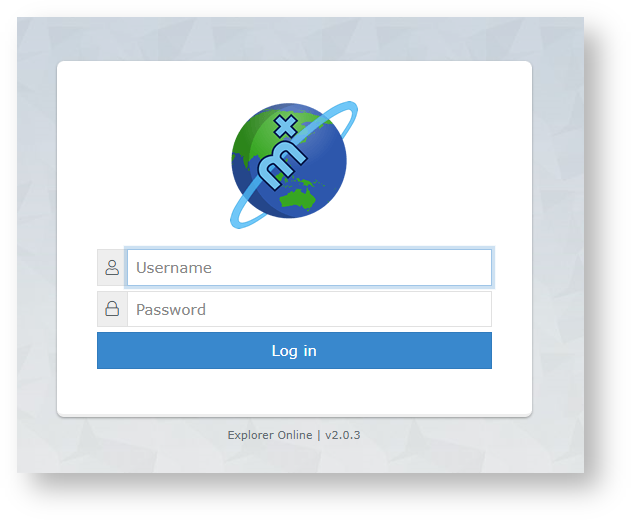
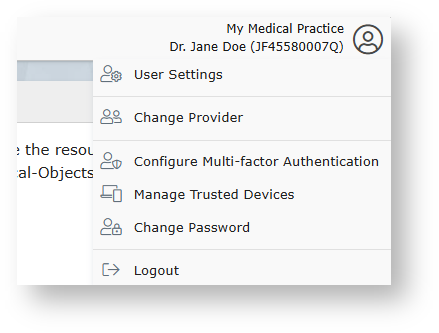
Setting up Two-Factor Authentication

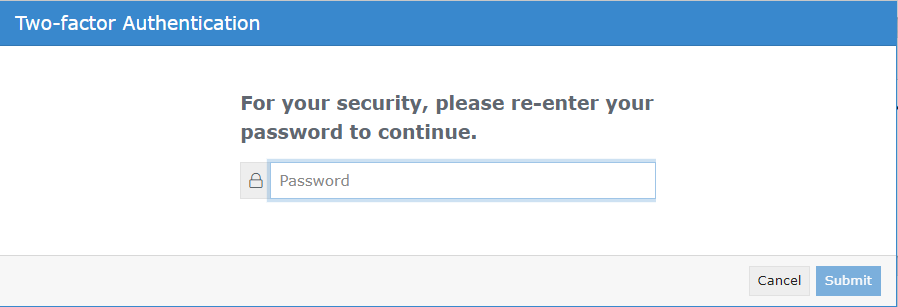
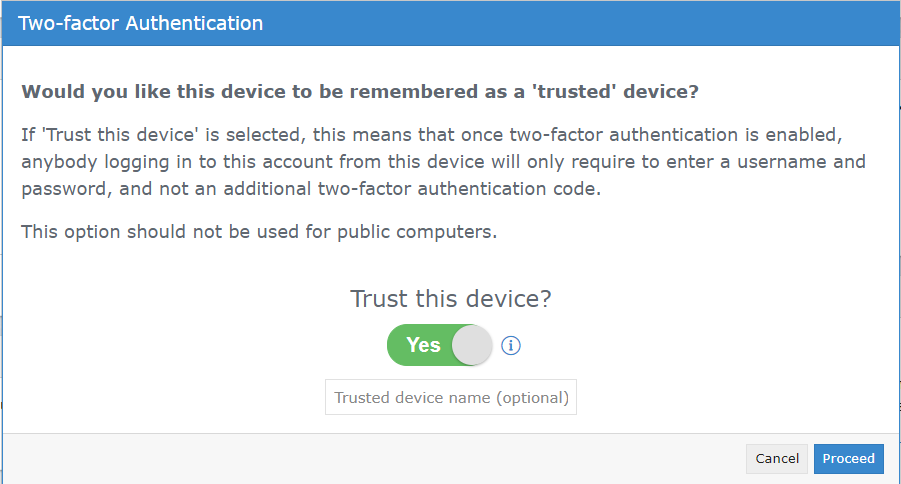
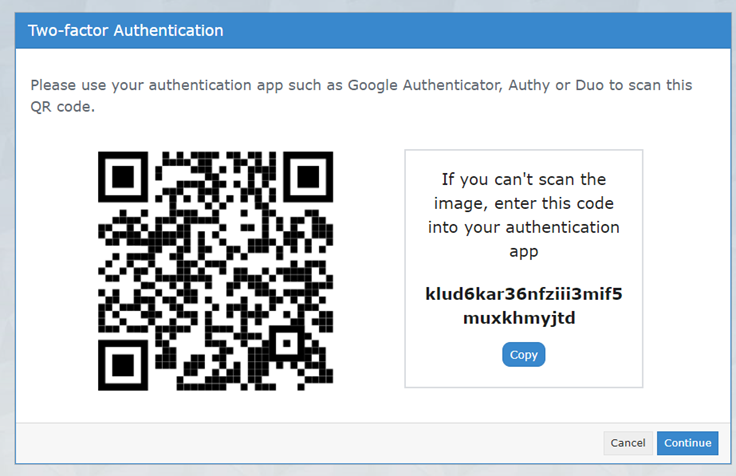
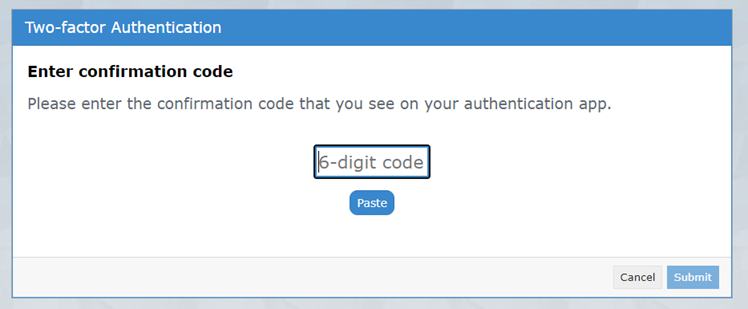

Managing Trusted Devices


2FA F.A.Q
Dashboard Navigation
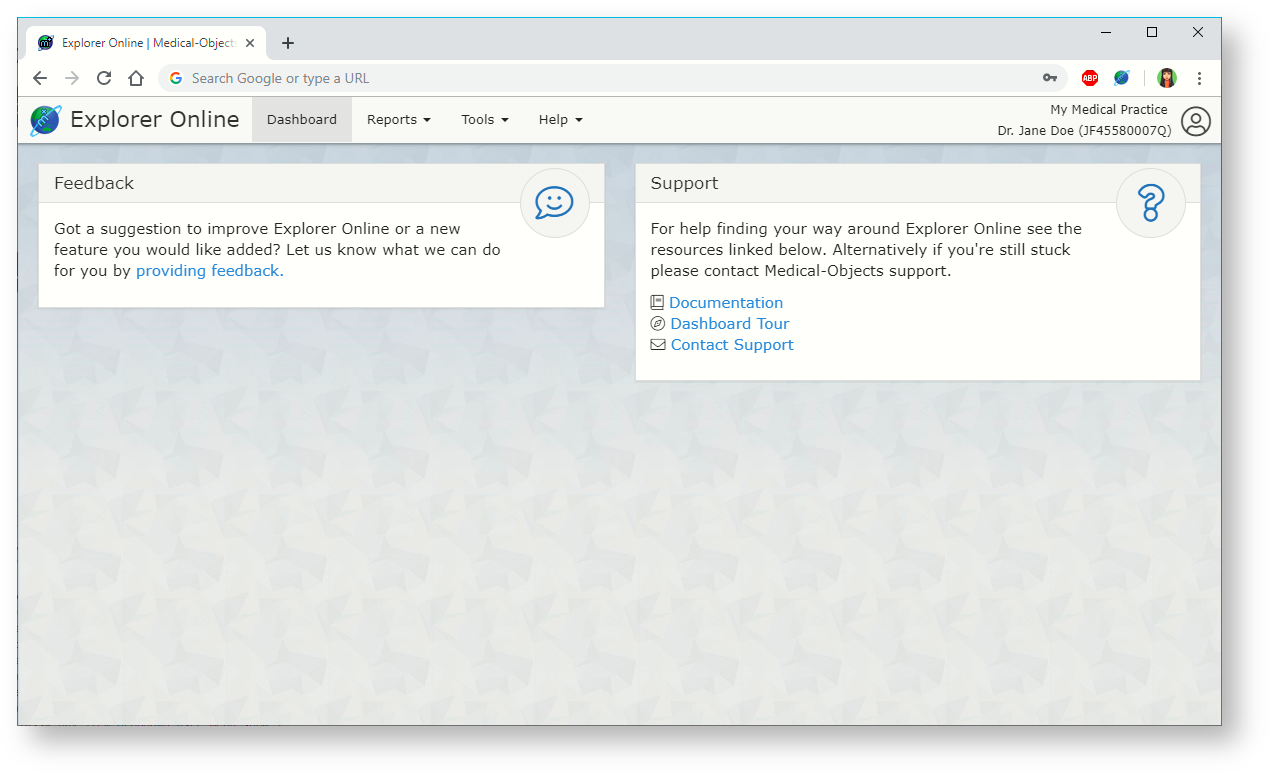
Navigation Menu

This is the main navigation menu. The menu is dynamically built up based on what features your server has enabled and what permissions your user account has. If a menu item is missing you may need to call the Helpdesk to correct your user permissions or enable a server feature.
Click on the User Menu, then click Change Password.Changing Your Password
Provider Lookup
The Provider Lookup feature allows you to easily search details and check if a provider is routable (setup to receive sent results). 2. Enter the details of the provider in the search box, enter the surname first if you are searching by the Name search type. Press the Search button or hit the enter key to load results. 3. You can check to see if the provider number is routable by looking for the green globe in the Name column. 4. By pressing the More Details button (
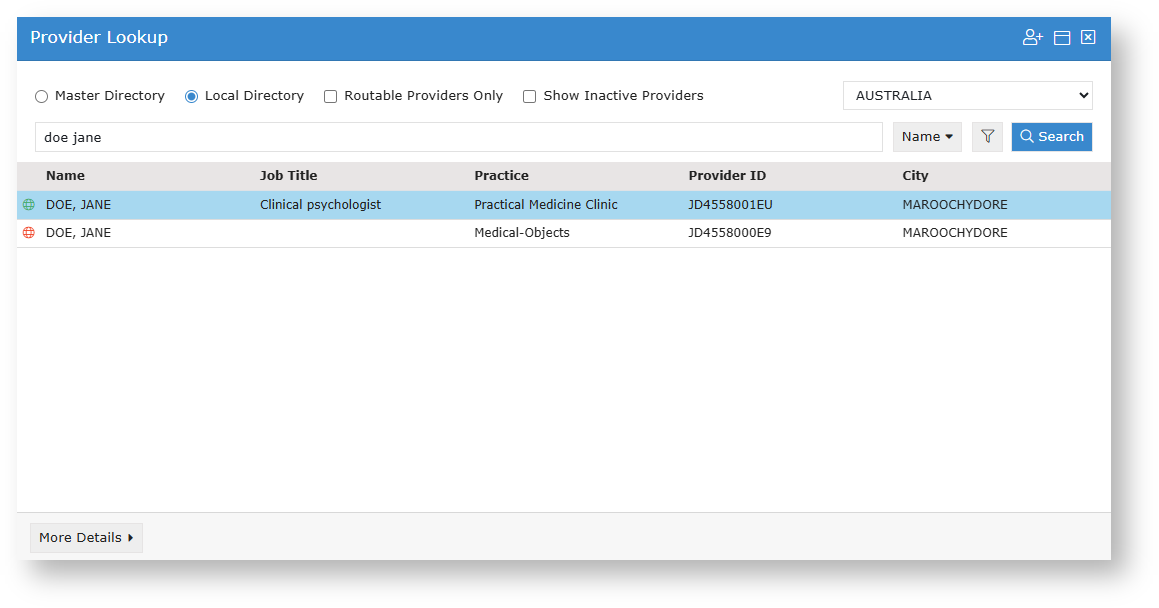
![]() ) at the bottom of the provider lookup, The current highlighted provider's additional information will be shown below the provider lookup. This is useful if your search results have multiple providers with the same name and you are unable to differentiate.
) at the bottom of the provider lookup, The current highlighted provider's additional information will be shown below the provider lookup. This is useful if your search results have multiple providers with the same name and you are unable to differentiate.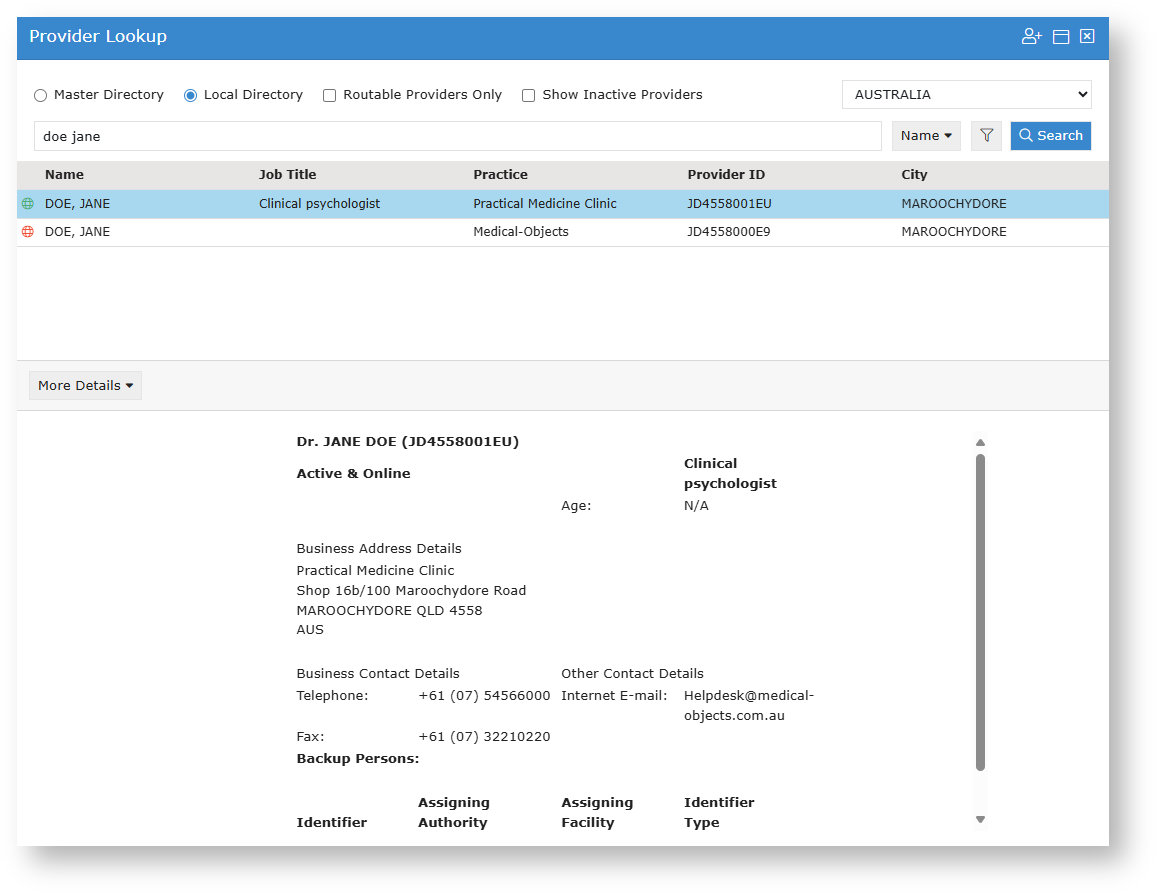
Having issues finding a doctor? Try the following: - Try a partial name search if you're unsure of the full name. "Bob Johnson" can be found by searching for "John B" or "Jo Bob". - If the doctor has a space in their surname, try leaving out the space. For example, "Bob Von Doctor" can by found by searching "VonDoctor" as the surname. The Activity Report allows you to view the transaction history of both incoming and outgoing documents. You can access the Activity Report via the Reports top menu option. When selecting the Activity Report menu option you will be presented with a window listing the report filtering options available. These will help you narrow the report down to only the documents you're interested in. By default, the filter options will show the current daily activity. You can leave it at that or you can click on the drop down button next to the end date to select a pre-defined range. Tips The status of the document. The most common are; This is a timestamp for when the document was delivered. It does not necessarily mean that the document has been viewed or reviewed - only that it has been delivered. If this field is blank then the document has not been delivered. This column allows you to know whether or not the document has been acknowledged. To see what each icon in this column means; refer to the ACK Legend that can be found in the top right. Hover your mouse over each icon for a description. You can view a single document by clicking on the view document icon ( From this window you can perform various actions on the single document such as print, forward or loading the patient file via the All Documents button. You can also navigate to other documents via the back ( You can select multiple documents in the grid and then perform an action on the selection. Currently the bulk actions available are;
- Change the search type to Organisation, and search for the practice name.Activity Report
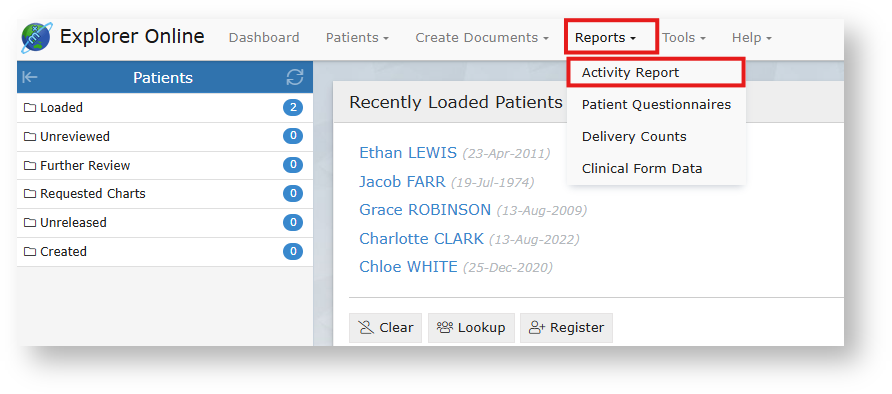
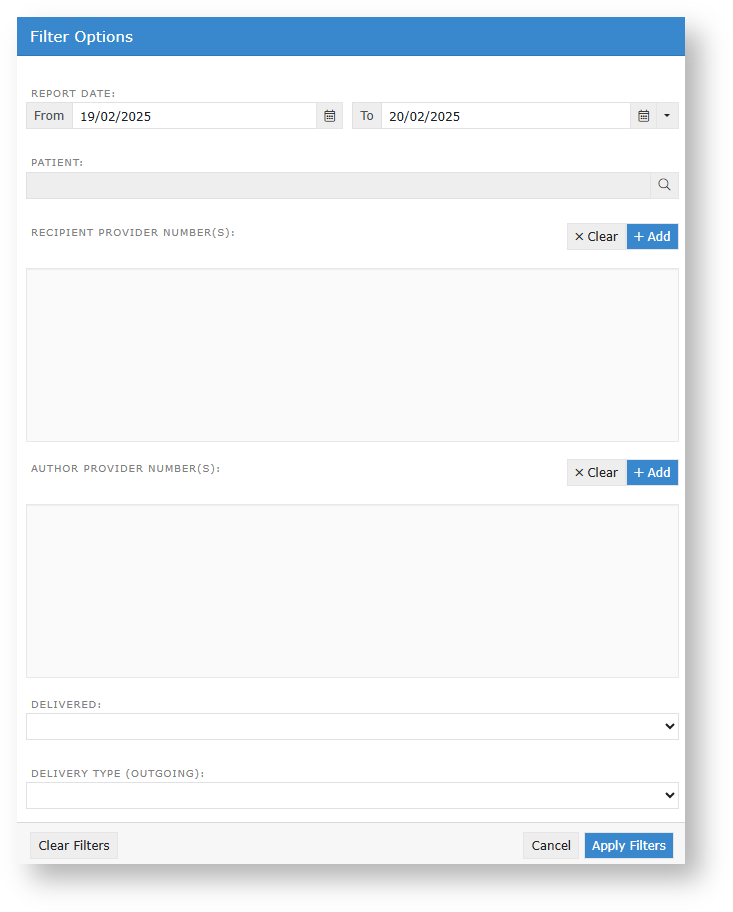
![]() ) which can be accessed by clicking the far button on the grid.
) which can be accessed by clicking the far button on the grid.Understanding the report
Date The date the document was created. Patient Patient name. SURNAME, First name (Date of Birth) Recipient The provider the document was addressed to. Report Title The document title. Author The provider that authored the document. To Practice The server name of the practice that the document was sent to. This is generally the practice name. Status Delivery Type The software of the recipient that received the document. Delivered Reviewed The document has been marked as reviewed at the receiver's end. This column will only be populated if the receiver's Delivery Type is EQUATORDXTRAY. If not then it's best to look at the ACK column for an indication if the document has been acknowledged. ACK 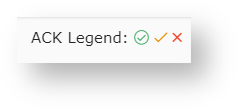
View Clicking the icon in this column will display the document. Viewing documents in the report
![]() ) in the View column of the grid. This will open the document in the document viewer window.
) in the View column of the grid. This will open the document in the document viewer window.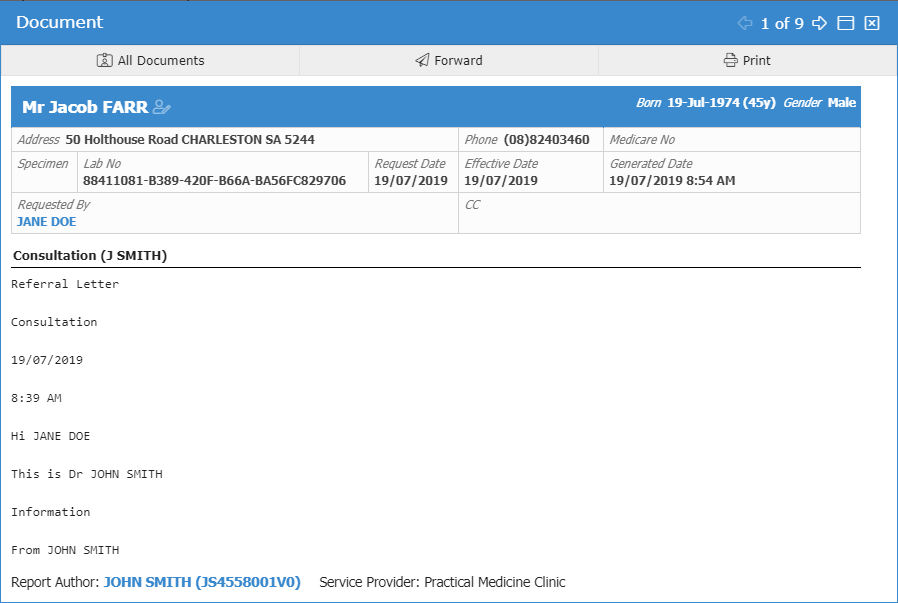
![]() ) and forward (
) and forward (![]() ) buttons in the top right or the left and right arrows of your keyboard. The blue highlighted row in the background indicates the document currently being viewed.
) buttons in the top right or the left and right arrows of your keyboard. The blue highlighted row in the background indicates the document currently being viewed.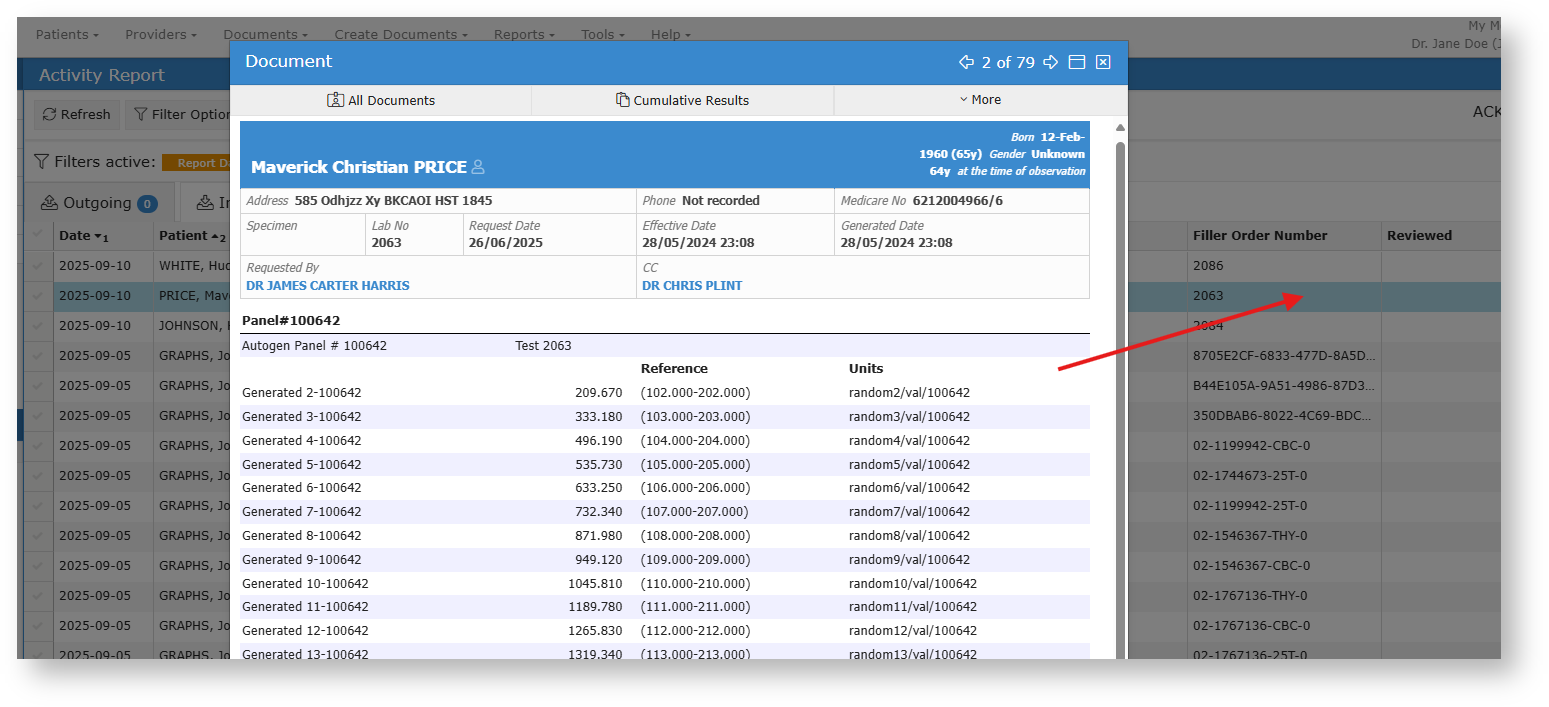
Bulk Actions
- No labels